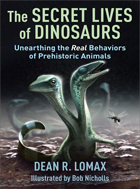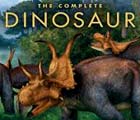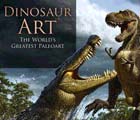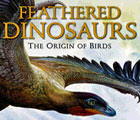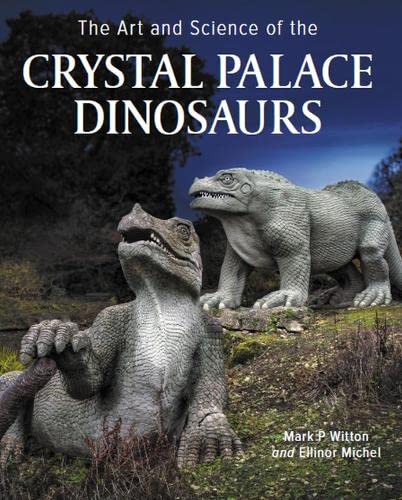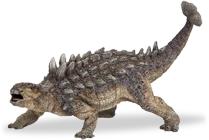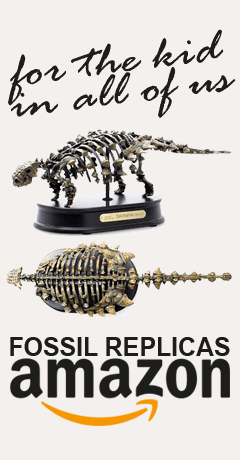Pronunciation: ang-KI-lo-SOR-ee-uh
Author: Henry Fairfield Osborn
Year: 1923
Meaning: Fused lizards (see etymology)
Locomotion: Quadrupedal (four legs)
Synonyms: Non known
Author: Henry Fairfield Osborn
Year: 1923
Meaning: Fused lizards (see etymology)
Locomotion: Quadrupedal (four legs)
Synonyms: Non known
[Sereno, 2005]Definition
The most inclusive clade containing Ankylosaurus magniventris but not Stegosaurus stenops.
About
Ankylosauria is a group of Middle Jurassic to Late Cretaceous-aged thyreophoran ornithischian dinosaurs, whose members (ankylosaurs) are affectionately known as tank dinosaurs because of their wide, low slung appearance and oval to oblong armour plates arranged in side to side bands across their shoulders, back and tail. Smaller armour nodules protect their legs and underside and fill the gaps between larger plates, and their heavily-ornamented skulls were fortified with yet more plates that were fused to the underlying bone. Two out of the five pairs of windows (fenestrae) which are present in other dinosaur skulls for load-lightening have been fused shut, and in extreme cases even their cheeks and/or eyelids were armoured.
To carry this extra weight ankylosaurs had short but powerful limbs and particularly strong shoulder and pelvic girdles, though not all were created equal; Ankylosauria houses several armoured battalions which sport unique features of their own.
Ankylosauridae: The heavy-duty ankylosaurs with heavy, as wide or wider than long, almost triangular heads when viewed from above, large armour plates, and a clubbed tail for self-defence. Short wide snouts suggest they were unfussy, low-foliage grazers.
Nodosauridae: Nodosaurids don't have a clubbed tail, and have simpler armour 'nodes' but this is counter-balanced by a series of nasty-looking spikes on their shoulders and neck. Their skulls are longer than they are wide, and somewhat pear-shaped when viewed from above. Slender snouts suggest they were picky, low foliage browsers.
Polacanthidae: This group was coined by Wieland way back in 1911 during a rant at the unnecessary raising of new family names. But he didn't provide a definition because he thought it was synonymous with Nodosauridae, making the name itself unnecessary, and that is where its members were assigned by most palaeontologists until it was resurrected by Kenneth Carpenter in 2001. Described as having "the skull of an ankylosaurid on the skeleton of a nodosaurid" which really doesn't do them justice, polacanthids are the most lightly armoured ankylosaurs and lack a clubbed tail but sport triangular plates along their neck, back and tail. Some experts suspect that Polacanthidae is a sub-group of primitive critters belonging to Nodosauridae, in which case it would adopt the sub-family suffix and become Polacanthinae.
It's an indication of ankylosaur "intelligence" that the much larger Tyrannosaurus rex was a genius by comparison but had a brain the size of a banana! Plus, they were probably stinking wind-bags: a rather unfortunate side effect of belly-fulls of fermenting foliage, but they were none the worse for it.
The first ankylosaurs rose in the early Jurassic of China then diversified and farted their way across every continent including Antarctica right up to the end of the age of dinosaurs when it took a six-mile-wide asteroid on a collision course with Earth to stop them dead in their tracks. But the fossil record suggests their numbers were being thinned out a couple of million years before that.
Click here to view Dinochecker's full A-Z list of all Ankylosaurs.
Fused LizardsEtymology
Ankylosauria is derived from the Greek "ankylos" (fused), "sauros" (lizard), and "-ia" (neuter plural). They're a family anchored by Ankylosaurus -- the "fused lizard".
Relationships
References
• Osborn HF (1923) "Two Lower Cretaceous dinosaurs of Mongolia". American Museum Novitates, 95: 1-10.
• Carpenter K (2001) "The Armored Dinosaurs".
• Vickaryous MK, Maryanska T and Weishampel DB (2004) "Ankylosauria". In Weishampel, Dodson and Osmólska (eds.) "The Dinosauria: Second Edition".
• Arbour VM (2009) "Estimating Impact Forces of Tail Club Strikes by Ankylosaurid Dinosaurs". PLoS ONE 4(8): e6738. DOI: 10.1371/journal.pone.0006738.
• Thompson RS, Parish JC, Maidment SCR and Barrett PM (2012) "Phylogeny of the ankylosaurian dinosaurs (Ornithischia: Thyreophora)". Journal of Systematic Palaeontology, 10(2): 301-312. DOI: 10.1080/14772019.2011.569091.
• Kirkland JI, Alcalá L, Loewen MA, Espílez E, Mampel L and Wiersma JP (2013) "The basal nodosaurid ankylosaur Europelta carbonensis n. gen., n. sp. from the Lower Cretaceous (lower Albian) Escucha Formation of northeastern Spain". PLoS ONE 8(12): e80405. DOI: 10.1371/journal.pone.0080405.
• Mallon JC, Evans DC, Ryan MJ and Anderson JS (2013) "Feeding height stratification among the herbivorous dinosaurs from the Dinosaur Park Formation (upper Campanian) of Alberta, Canada". BMC Ecology, 13: 14. DOI: 10.1186/1472-6785-13-14.
• Burns ME and Currie PJ (2014) "External and internal structure of ankylosaur (Dinosauria,
Ornithischia) osteoderms and their systematic relevance". Journal of Vertebrate Paleontology, 34: 835-851.
• Arbour VM and Zanno LE (2019) "Tail weaponry in ankylosaurs and glyptodonts: An example of a rare but strongly convergent phenotype". The Anatomical Record, 303: 988-998. DOI: 10.1002/ar.24093.
• Dodson PM (2019) "Earliest record of an ankylosaurian dinosaur (Ornithischia: Thyreophora): Dermal armor from Lower Kota Formation (Lower Jurassic) of India". Neues Jahrbuch für Geologie und Paläontologie - Abhandlungen, 291(2): 205-219. DOI: 10.1127/njgpa/2019/0800.
• Maidment SCR, Strachan SJ, Ouarhache D, Scheyer TM, Brown EE, Fernandez V, Johanson Z, Raven TJ and Barrett PM (2021) "Bizarre dermal armour suggests the first African ankylosaur". Nature Ecology & Evolution, 5: 1576–1581. DOI: 10.1038/s41559-021-01553-6.
• Soto-Acuña S, Vargas AO, Kaluza J, Leppe MA, Botelho JF, Palma-Liberona J, Simon-Gutstein C, Fernández RA, Ortiz H, Milla V, Aravena B, Manríquez LME, Alarcón-Muñoz J, Pino JP, Trevisan C, Mansilla H, inojosa LF, Muñoz-Walther V and Rubilar-Rogers D (2021) "Bizarre tail weaponry in a transitional ankylosaur from subantarctic Chile". Nature, 600: 259-263.
• Madzia D, Arbour VM, Boyd CA, Farke AA, Cruzado-Caballero P and Evans DC (2021) "The phylogenetic nomenclature of ornithischian dinosaurs". PeerJ, 9: e12362. DOI: 10.7717/peerj.12362.
• Yoshida J, Kobayashi Y and Norell MA (2023) "An ankylosaur larynx provides insights for bird-like vocalization in non-avian dinosaurs".
Communications Biology, 6: 152. DOI: 10.1038/s42003-023-04513-x.
• Brum AS, Eleutério LHS, Simões TR, Whitney MR, Souza GA, Sayão JM and Kellner AWA (2023) "Ankylosaurian body armor function and evolution with insights from osteohistology and morphometrics of new specimens from the Late Cretaceous of Antarctica". Paleobiology, First View: 1-22. DOI: 10.1017/pab.2023.4.
• Raven TJ, Barrett PM, Joyce CB and Maidment SCR (2023)
The phylogenetic relationships and evolutionary history of the armoured dinosaurs (Ornithischia: Thyreophora)". Journal of Systematic Palaeontology, 21(1): 2205433. DOI: 10.1080/14772019.2023.2205433.





